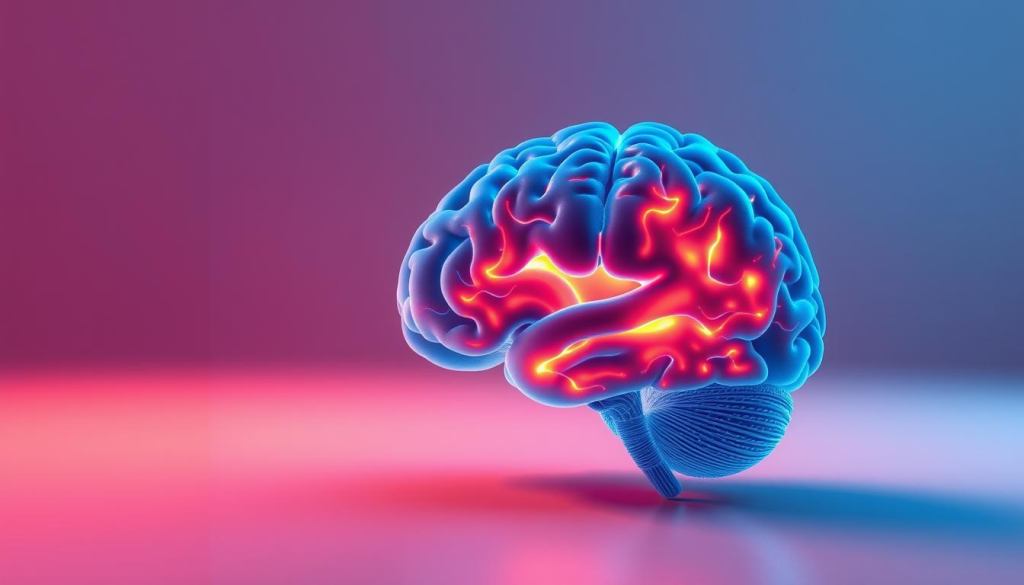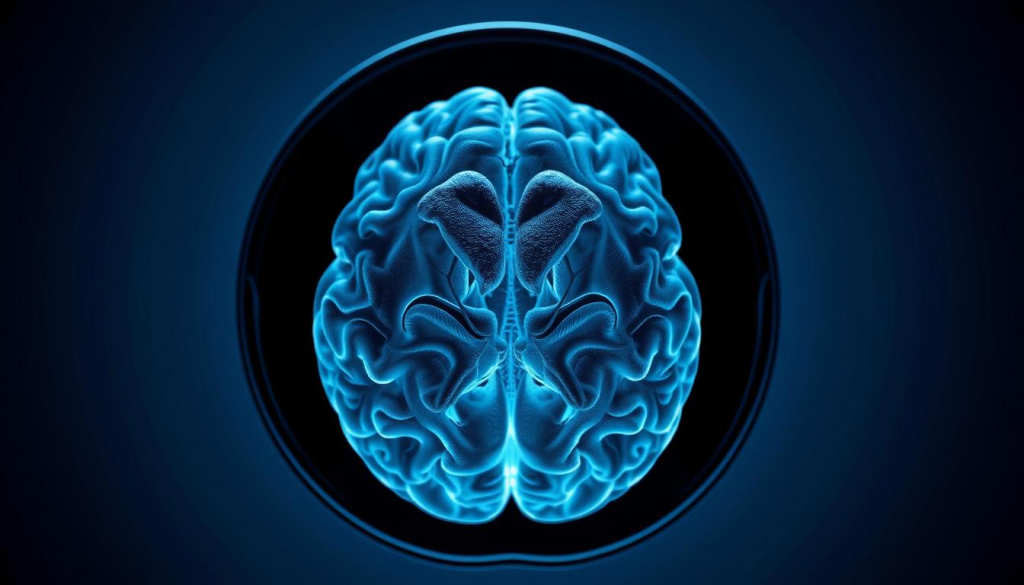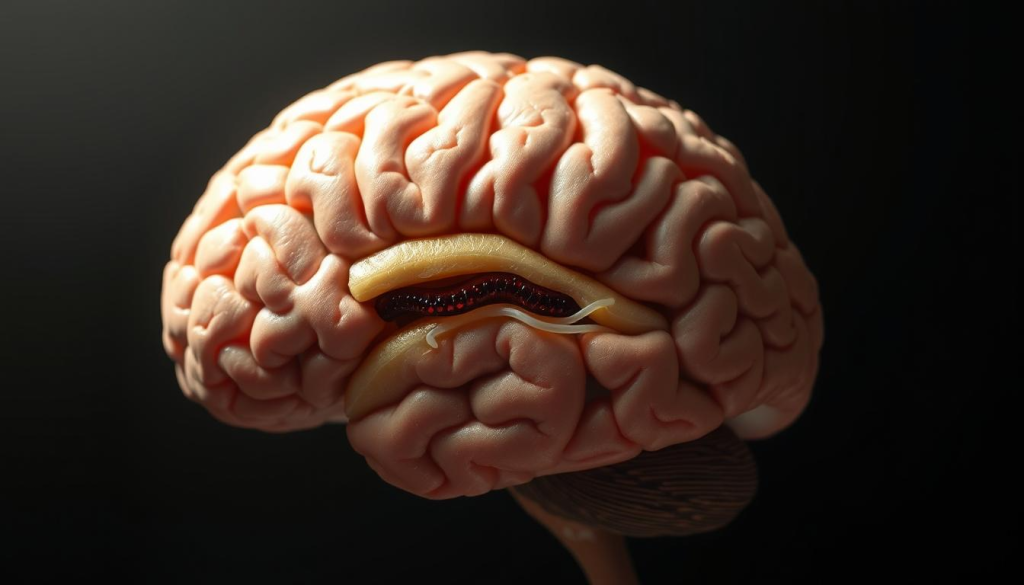
At Liv Hospital, we use advanced tests to help those with Parkinson’s disease. The DaTscan test is a key tool. It shows how dopamine works in the brain.
The DaTscan test uses a special tracer and a SPECT machine. It finds the loss of dopamine neurons, a sign of Parkinson’s. This helps us give the right care and treatment to each patient. The DaTscan, also called NM DaT scan, uses a radioactive tracer called Ioflupane (123I) that binds to dopamine transporters in the brain. The SPECT imaging detects this binding, highlighting areas with reduced dopamine function, which is characteristic of Parkinson’s disease. This precise imaging aids early and accurate diagnosis, guiding tailored treatments.

The DaTscan test is a cutting-edge brain imaging method. It helps tell Parkinson’s disease apart from other movement disorders. DaTscan works by focusing on dopamine-making neurons in the brain.
DaTscan uses a special radioactive tracer to see dopamine activity in the brain. This tracer sticks to dopamine transporters in the striatum. It shows how many dopamine transporters there are, giving clues about the brain’s health.
DaTscan is different from MRI or CT scans because it focuses on dopamine. This makes it great for spotting Parkinson’s disease. It’s better at telling Parkinson’s apart from other conditions with similar symptoms.
DaTscan technology has grown a lot over time. Better tracers and imaging methods have made DaTscan more accurate and reliable.
| Feature | Early DAT Tests | Current DaTscan Technology |
| Tracer Specificity | Lower specificity | Higher specificity for dopamine transporters |
| Image Resolution | Lower resolution | Higher resolution, allowing for more precise assessments |
| Diagnostic Accuracy | Less accurate | More accurate, aiding in differential diagnosis |
As DaTscan tech keeps getting better, we’ll see even more precise diagnoses. This will lead to better care for patients.

Parkinson’s disease is closely linked to the degeneration of dopamine transporters. These transporters are vital for movement control. They play a key role in regulating dopamine levels for neurotransmission. Understanding their role is essential for diagnosing and managing Parkinson’s disease effectively.
Dopamine is a neurotransmitter that plays a significant role in movement control and coordination. It is produced by neurons in the substantia nigra, a part of the brain that is affected in Parkinson’s disease. Dopamine helps regulate movement by facilitating communication between different parts of the brain.
When dopamine is released, it binds to dopamine receptors on the surface of other neurons. This transmits signals that help control movement. This process is critical for initiating and maintaining smooth, coordinated movements.
In Parkinson’s disease, the degeneration of dopamine-producing neurons leads to a deficiency in dopamine. This deficiency disrupts normal neurotransmission. It results in the characteristic symptoms of Parkinson’s, such as tremors, stiffness, and bradykinesia (slowness of movement).
The loss of dopamine-producing neurons also affects other neurotransmitter systems. This complicates the clinical picture. Understanding the relationship between dopamine deficiency and Parkinson’s symptoms is key for developing effective treatment strategies.
Research has shown that a significant loss of dopamine-producing neurons, often cited as around 50% or more, is commonly seen when classic Parkinson’s symptoms become apparent. This level of neuron loss indicates a substantial degeneration of the nigrostriatal pathway, which is critical for motor control.
The table below summarizes the relationship between dopamine neuron loss and the manifestation of Parkinson’s symptoms.
| Dopamine Neuron Loss | Clinical Symptoms |
| Less than 50% | Preclinical or mild symptoms |
| 50% or more | Classic Parkinson’s symptoms (tremors, stiffness, bradykinesia) |
| Advanced degeneration | Severe motor symptoms, possible dementia and other complications |
Understanding the role of dopamine transporters and the impact of dopamine deficiency on Parkinson’s disease is key for diagnosis and treatment. The DaTscan, a specialized imaging technique, helps assess dopamine transporter integrity in the brain. It aids in diagnosing Parkinson’s disease and differentiating it from other movement disorders.
A DaTscan is a special imaging test used to find certain brain disorders. It has several steps, from getting ready to the scan and after. Knowing what to expect can make you feel less anxious and ensure a smooth process.
Before a DaTscan, you’ll need to follow some steps. Tell your doctor about any medicines you’re taking, as some might need to be changed. You’ll also need to bring a valid ID and any medical records.
On test day, dress comfortably and leave valuables at home. The place where you’ll be scanned will give you all the details you need.
During the test, a special tracer is given through an IV. This tracer finds dopamine in the brain, letting the DaTscan machine take detailed pictures. The whole process takes about 30 minutes to an hour. You’ll need to stay very quiet and not move to get clear pictures.
The tracer used in DaTscan targets dopamine in the brain. This tracer is safe and has been tested a lot for imaging. It attaches to dopamine, making it possible for the DaTscan machine to take detailed images for diagnosis.
After the DaTscan, you can usually go back to your normal activities right away. The tracer leaves your body in a few hours. After the scan, experts will look at the images. Then, they’ll send the results to your doctor for you to discuss.
Doctors often suggest a DAT test for Parkinson’s when they’re not sure of the diagnosis. This is true for patients with early symptoms that could be Parkinson’s or another disorder. The DAT scan for Parkinson’s is a key tool for neurologists to make accurate diagnoses.
When a patient’s symptoms are unclear, a DAT test neurology expert might recommend a DAT scan. This is common when symptoms could be Parkinson’s or another condition, like essential tremor.
Doctors might suggest a DAT scan for patients with early Parkinson’s symptoms. Early detection is important for timely treatment and management.
The DAT test for Parkinson’s is great for telling Parkinson’s apart from other movement disorders. It checks dopamine transporters in the brain. This helps doctors decide on the best treatment.
Getting a Parkinson’s diagnosis can be tough. But, with tools like the DAT scan, patients get accurate diagnoses and timely treatment. This improves their quality of life.
DaTscan technology is a key tool in telling Parkinson’s disease apart from other movement disorders. It shows how much dopamine transporter is in the brain. This helps doctors make more precise diagnoses.
Diagnosing Parkinson’s disease can be tricky because it looks like essential tremor. DaTscan helps by showing if dopamine transporters are present or not in the brain’s striatum. This area is key in Parkinson’s disease.
People with essential tremor usually have normal dopamine levels. But those with Parkinson’s have less. Knowing this helps doctors choose the right treatment.
Parkinson’s disease is often mixed up with other syndromes like multiple system atrophy and progressive supranuclear palsy. DaTscan can’t say for sure what these are. But it can show if it’s not Parkinson’s by looking at dopamine levels.
If a DaTscan shows normal levels in someone with symptoms, it might not be Parkinson’s. This means doctors need to look for other reasons. Learn more about DaTscan and its role in.
Limitations in Differential Diagnosis
DaTscan is very useful, but it’s not perfect. It can’t tell Parkinson’s disease apart from other diseases that also loss dopamine. So, doctors must look at the whole picture, not just DaTscan results.
Using DaTscan with other tests makes diagnosis better. This leads to treatments that really work for each person.
The DaT SPECT test shows us how Parkinson’s disease affects the brain. It looks at dopamine levels in the brain, focusing on the striatum area.
A normal DaTscan shows a specific pattern in the striatum. This pattern means dopamine is being transported well. But, an abnormal scan might show less or an uneven pattern. This could mean dopamine transporters are missing.
Let’s look at the main differences:
The striatum is key for controlling movement. Losing dopamine transporters here is a big sign of Parkinson’s. Doctors can see how bad the disease is by looking at this loss.
Important things about dopamine loss include:
The DaTscan is great at finding dopamine loss early. This helps in many ways:
Using the DaT SPECT test early can really help us understand and treat Parkinson’s better.
DaTscan technology has greatly improved how we diagnose neurology issues. It uses special machines and detailed imaging protocols for accurate diagnoses. We’ll look into how the DAT scan machine works, the advanced imaging methods, and the role of quality control and image processing.
The DAT scan machine, or SPECT scanner, detects a radioactive tracer in the brain. This tracer sticks to dopamine transporters, showing the dopamine system. The scanner takes pictures from different angles, then makes a 3D image.
New imaging methods have made DaTscan results clearer and more accurate. Techniques like attenuation and scatter correction reduce errors. Also, advanced algorithms help see dopamine transporter density better.
Quality control is key for accurate DaTscan results. It includes keeping the SPECT scanner in top shape, following strict protocols, and using image processing. Techniques like filtering and reconstruction make images better.
| Aspect | Description | Importance |
| Dense Imaging Protocols | Standardized protocols for imaging | Ensures consistency and accuracy |
| SPECT Scanner Maintenance | Regular checks and calibration | Ensures optimal performance |
| Image Processing Techniques | Filtering and reconstruction algorithms | Enhances image quality and diagnostic accuracy |
Looking into the DaTscan test, we must consider practical aspects. The cost, insurance, and where to get the test affect its use in diagnosing Parkinson’s disease.
The DaTscan’s price changes based on several things. These include where you get it, the technology used, and your insurance. On average, it costs between $1,500 and $3,000 or more.
Insurance coverage for DaTscan tests also varies. Some insurance may cover it under certain conditions. Others might not.
Patients should talk to their insurance to see what’s covered. Many insurance companies need pre-approval or specific criteria before they cover the test.
| Insurance Provider | Average Coverage | Pre-approval Required |
| Medicare | $1,200 – $2,000 | Yes |
| Private Insurance | $1,000 – $2,500 | Often |
| Medicaid | $800 – $1,800 | Varies by State |
Finding a place for DaTscan tests involves a few steps. Start by asking your doctor for recommendations. Many big hospitals and medical centers have nuclear medicine departments that offer DaTscan tests.
Patients can also search online for DaTscan services near them. Make sure the facility has experience with DaTscan and uses the right technology.
Understanding DaTscan tests helps patients and doctors make better choices. This is for diagnosing and managing Parkinson’s disease.
DaTscan is a key tool in diagnosing Parkinson’s disease. It helps by checking dopamine levels in the brain. This is important for telling Parkinson’s apart from other movement disorders.
The future of DaTscan looks bright. New tech will make it even better at diagnosing Parkinson’s. We expect more research to make DaTscan more reliable for early detection.
DaTscan is set to play a big role in managing Parkinson’s disease. It helps doctors give better treatment plans. As medicine keeps improving, DaTscan’s role will grow. This will lead to better care and a better life for patients.
A DaTscan test is a brain imaging procedure. It uses a radioactive tracer and a SPECT machine. This helps diagnose Parkinson’s disease by showing dopamine activity.
The DaTscan test involves injecting a radioactive tracer. It binds to dopamine transporters in the brain. Then, a SPECT machine captures images, showing dopamine transporter distribution.
Dopamine transporters are key in regulating dopamine levels in the brain. Their deficiency is linked to Parkinson’s disease symptoms. Dopamine is vital for movement control.
A 50% loss of dopamine-producing neurons is a major milestone in Parkinson’s disease. It often marks the start of classic Parkinson’s symptoms.
The DaTscan procedure starts with preparation guidelines. Then, a radioactive tracer is injected. Next, a SPECT machine captures images. After, there’s recovery and follow-up.
Doctors suggest a DAT test for Parkinson’s in uncertain cases. They also recommend it for early symptoms without a clear cause. It helps differentiate between movement disorders.
DaTscan differentiates Parkinson’s from other conditions by showing dopamine transporter activity. This helps identify Parkinson’s disease accurately.
Normal DaTscan results show typical dopamine transporter distribution. Abnormal results indicate a loss of dopamine transporters. This suggests Parkinson’s disease or other neurodegenerative disorders.
Dopamine transporter loss in the striatum is a key sign of Parkinson’s disease. DaTscan detects this loss. It enables early diagnosis and treatment.
DaTscan technology uses advanced imaging and quality control. It produces high-quality images of dopamine transporter activity.
The cost of DaTscan varies. Insurance coverage may apply. It’s important to check with insurance providers and find facilities that offer DaTscan procedures.
The future of DaTscan in Parkinson’s diagnosis looks promising. Ongoing advancements in technology may lead to improved diagnostic accuracy.
Subscribe to our e-newsletter to stay informed about the latest innovations in the world of health and exclusive offers!
WhatsApp us